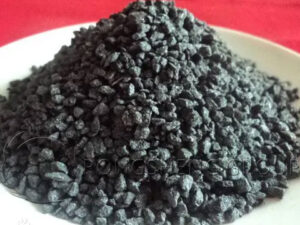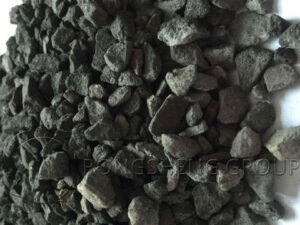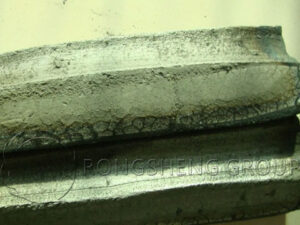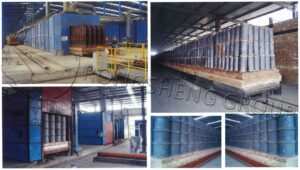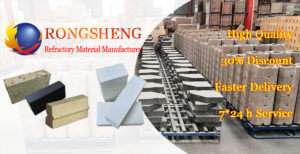Corundum Mullite Bricks Used in the Burner of the Sleeve Lime Kiln
Generally, the burner of the sleeve lime kiln is made of magnesia refractory bricks. However, due to the fact that it is prone to breakage within a year of use, the service life of the burner brick is not synchronized with the service life of the kiln body. The burner brick of the sleeve lime kiln broke 1/3 in less than one year, and the service life of the lime kiln was more than 3 years. Therefore, the service life of the burner brick is not synchronized with the service life of the kiln body. Although the fracture of burner bricks does not affect the use of lime kilns, it has certain negative effects on the calcination process. Therefore, it is necessary to study the corundum mullite bricks used in the burner of the sleeve lime kiln.
The reason why the burner brick is easy to break is that the burner brick is made of magnesia refractory brick. In addition to excellent high-temperature resistance and lime resistance, the alkaline material also has the following unfavorable factors, which may lead to premature fracture.
- Magnesium refractory has large thermal expansion and poor thermal shock resistance. The burner brick is scoured by the hot air flow of the flame, the thermal shock environment is harsh, and cracks caused by thermal shock are prone to occur.
- Due to the large thermal expansion coefficient, the thermal stress of the magnesia refractory is high. When there is a local stress concentration, the fracture is easy to occur.
- Magnesium refractories are easy to hydrate, resulting in bulging and cracking. Construction is greatly affected by environmental conditions. Improper baking is also prone to cracking, resulting in falling blocks. In cold and humid weather, the water in the fire mud is not easy to remove, and it is easier to hydrate the bricks. Therefore, it has strict requirements on construction environmental conditions and baking.
- The thermal strength of magnesia refractories is low, and it is prone to creep under thermal stress.
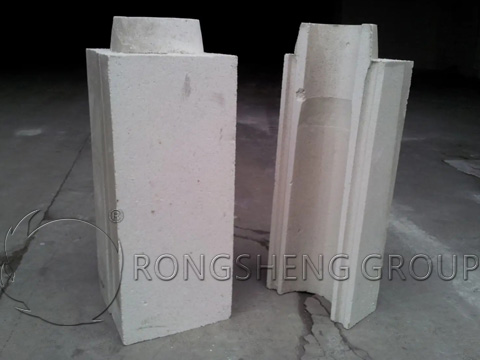
The improvement of burner brick material selection of burner brick prefabricated parts made of corundum mullite refractory castable has the following advantages.
- The main crystal phase of corundum mullite refractory castable is corundum and mullite. Corundum has a high melting point of 2050°C, its hardness and strength can resist high temperature and airflow erosion, and it has excellent high temperature wear resistance. The melting point of mullite is also higher than 1840 ° C, which is characterized by a small thermal expansion coefficient and a needle-column mosaic structure, which has good thermal shock resistance. The refractory castable composite of corundum phase and mullite phase has the advantages of both, which can effectively resist the erosion of the burner brick by the hot air flow of the flame. At the same time, it can withstand the harsh thermal shock environment and prevent the burner brick from breaking.
- Corundum mullite refractory castables do not have hydration problems. The construction is less affected by the environment, and the requirements for construction conditions are not harsh. And pouring, curing, and heat treatment can be carried out by the supplier, and the quality can be easily guaranteed. No hydration cracking during construction and baking.
- The burner brick is a special-shaped brick, which is not easy to be machine-pressed. Using the casting method, it is easy to form integral or separate parts and to achieve precise control of shape and size. The critical particle size of machine-pressed bricks is limited, generally 5 mm. The critical particle size of the castable can be as large as about 20 mm, which is conducive to the stability of the structure and the improvement of thermal shock resistance.
- When the burner brick is in use, since the gas (or fuel oil) is sprayed into the furnace, the CaO dust in the furnace is not easy to adhere to the burner cavity, and the reaction between CaO and the Al2O3-SiO2 material will not occur. Even if there is a small amount of CaO attached to the burner brick, the content of A12O3 in the burner brick is relatively high (greater than 75%), while the content of SiO2 and CaO is relatively low. According to the A12O3-SiO2-CaO ternary phase diagram, the reaction temperature is around 1500℃. It can be considered that the solid-phase reaction of Al2O3-SiO2-CaO does not easily occur at the working temperature of the lime kiln.
Summary: Through the analysis of the reasons for the phenomenon that the burner of the sleeve kiln is easy to break, and according to the combustion process of the lime kiln calcination zone, the structural design of the lining refractory material, etc. Production of corundum mullite refractory castable prefabs suitable for sleeve kiln burners. The corundum mullite bricks used in the burner of the sleeve lime kiln can synchronize the service life of the burner brick with the service life of the kiln body.
